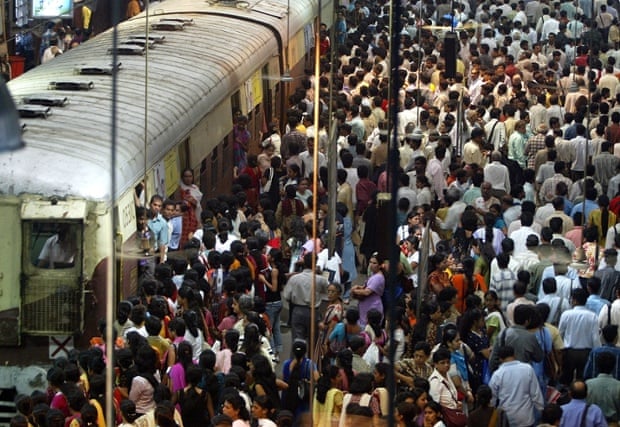'People will forgive you for being wrong, but they will never forgive you for being right - especially if events prove you right while proving them wrong.' Thomas Sowell
Search This Blog
Sunday, 3 December 2023
Thursday, 14 September 2023
Saturday, 15 July 2023
A Level Economics 14: Factors Influence Demand and Supply
Identify and explain the main factors that effect demand and supply
The main influences on demand and supply in product markets are numerous and can be categorized into various factors. Here are the key influences on demand and supply:
Factors Influencing Demand:
Price: The price of a product has a significant impact on demand. Generally, as the price of a product decreases, the quantity demanded tends to increase, and vice versa. This relationship is known as the law of demand.
Consumer Income: The income of consumers affects their purchasing power and, consequently, demand. As income increases, consumers tend to buy more goods and services, especially for normal goods. Conversely, for inferior goods, as income rises, demand may decrease.
Consumer Preferences and Tastes: Consumer preferences, tastes, and trends play a crucial role in shaping demand. Changes in consumer preferences can significantly impact the demand for certain products. For example, if there is a growing preference for healthier food options, the demand for organic or plant-based products may increase.
Population and Demographics: Changes in population size and demographics can influence product demand. An increase in population or shifts in age groups can lead to changes in demand patterns. For instance, a growing aging population may result in increased demand for healthcare products and services.
Consumer Expectations: Consumer expectations about future prices, income levels, or product availability can influence current demand. If consumers anticipate higher future prices or expect their income to decrease, they may increase their current demand to avoid potential cost increases.
Factors Influencing Supply:
Price: Similar to demand, the price of a product also impacts supply. As the price of a product rises, producers are typically willing to supply more of it, leading to an upward-sloping supply curve. Conversely, a decrease in price may result in a decrease in supply.
Input Costs: The cost of inputs, such as labor, raw materials, energy, and capital, significantly influences supply. If input costs rise, it becomes more expensive to produce goods, which may lead to a decrease in supply. Conversely, if input costs decrease, it can stimulate increased supply.
Technological Advances: Technological advancements can improve production processes, increase efficiency, and reduce costs, leading to an increase in supply. For example, advancements in manufacturing techniques or automation can enhance productivity and enable higher levels of production.
Government Regulations and Policies: Government regulations and policies can have a substantial impact on supply. Changes in taxation, subsidies, trade policies, environmental regulations, and labor laws can influence the costs of production, access to resources, and overall supply levels.
Natural Factors: Natural factors such as weather conditions, natural disasters, and climate patterns can affect the supply of certain goods, particularly in industries such as agriculture and energy. Droughts, floods, or adverse weather events can disrupt production and reduce supply.
It's important to note that these influences on demand and supply are interconnected and can interact with each other. Changes in one factor can trigger responses in other factors, leading to shifts in demand and supply curves. Understanding these influences is crucial for analyzing market dynamics, predicting price movements, and making informed economic decisions.
Monday, 2 January 2023
Thursday, 22 December 2022
Other democracies should beware taking pleasure in the UK’s travails
Voters in most developed countries feel that their contract with the state is fraying writes Bronwen Maddox in the FT
I can barely think of a meeting I’ve had since September that didn’t begin with jokes about Britain’s newfound instability. I started a job a few days before Liz Truss became prime minister, and the “lasted longer than the lettuce” one has been inescapable. “Three prime ministers in a year!” (Ambassadors from European countries still incredulous at Brexit particularly like this one.) Now, there are the strikes — although the meltdown of the NHS’s emergency services is no joke at all.
But these are rash quips if coming from other democracies. The joke may be on them, too. Older democratic countries share many of the same problems and are struggling to show that they have a system that can solve them. “If you don’t have a political system that can make short-term sacrifices for the long-term good of the country, how can you expect your system of government to survive?” asked one senior Chinese official of a distinguished British former minister.
It’s a good question. In Britain, the NHS is a symbol of these problems above all others. The stand-off with the government by nurses and ambulance workers is of course about worker pay, but is also about how much the government wants to pay for the health service at all.
Much of the problem stems from the demands of an ageing population, and that is something that many older democracies share. Even if other countries may no longer envy the NHS, they share some of the same troubles. On many fronts, the contract that voters thought they had with their governments — over them paying for healthcare, education, pensions — is being rewritten, and not in their favour. Perhaps the best-known saying of Jean Claude Juncker, when prime minister of Luxembourg, was: “We know what to do, we just don’t know how to get re-elected once we have done it.”
Those sceptical of democracy have prophesied that this is how it consumes itself. It is easier to make promises than to keep them, so the temptation is for politicians to make extravagant commitments to get into office, and then try somehow to stay there. Following this recipe, democracy decays into populism and then autocracy.
To some degree, yes. Boris Johnson and the unfulfillable Brexit promises were a symptom of the need to assemble an expansive coalition, built on impossibilities. The antidote — the “grown-up conversation with the nation” that politicians sometimes desperately invoke — seems pitifully weak.
All the same, that is what is needed. The pandemic does offer some encouragement, showing that people are prepared to give up an extraordinary amount if persuaded it is necessary. But there are also more practical things that governments could do to help.
First, they need to make the case for growth and the steps required to bring it about. Truss was not wrong in her ambition, just in recklessly ignoring the constraints on any country seeking to borrow money. For Britain, that means closer relations with Europe. A US trade deal is not coming any time soon; the only alternative of a large market is China, and Rishi Sunak’s government has chosen not to lean that way. It also means telling people that more legal immigration is needed. It means championing the creativity in science and culture that are themselves the product of the intellectual freedom at the heart of democracies.
The second thing to do is change voting systems and improve legislatures. In the UK, the House of Lords is indefensible, as former prime minister Gordon Brown has pointed out. He is right that regions need more representation, too. And first past the post is increasingly hard to defend in a country of many different kinds of people and views.
Third, is to stand up for the values that underpin liberal democracy but not try to couple them with all the other deals on the world stage. Insisting on a human rights agenda in every diplomatic relationship can jeopardise the pursuit of environmental and security accords that are desperately needed on their own account. It can lead to accusations of double standards — as shown by the controversy over Qatar’s hosting of the World Cup despite its treatment of LGBTQ people.
It is right, though, to pursue those liberal principles, while acknowledging that not all countries share them. They are, along with economic prospects, one of the reasons people risk their lives in small boats trying to come to the UK — one of the best arguments that liberal democracy has a future.
Tuesday, 14 December 2021
Thursday, 15 November 2018
Will UK house prices ever rise again?
Tuesday, 24 November 2015
There’s a population crisis all right. But probably not the one you think
GeorgeMonbiot in The Guardian
This column is about the population crisis. About the breeding that’s laying waste the world’s living systems. But it’s probably not the population crisis you’re thinking of. This is about another one, that we seem to find almost impossible to discuss.
You’ll hear a lot about population in the next three weeks, as the Paris climate summit approaches. Across the airwaves and on the comment threads it will invariably be described as “the elephant in the room”. When people are not using their own words, it means that they are not thinking their own thoughts. Ten thousand voices each ask why no one is talking about it. The growth in human numbers, they say, is our foremost environmental threat.
At their best, population campaigners seek to extend women’s reproductive choices. Some 225 million women have an unmet need for contraception. If this need were answered, the impact on population growth would be significant, though not decisive: the annual growth rate of 83 million would be reduced to 62 million. But contraception is rarely limited only by the physical availability of contraceptives. In most cases it’s about power: women are denied control of their wombs. The social transformations that they need are wider and deeper than donations from the other side of the world are likely to achieve.
At their worst, population campaigners seek to shift the blame from their own environmental impacts. Perhaps it’s no coincidence that so many post-reproductive white men are obsessed with human population growth, as it’s about the only environmental problem of which they can wash their hands. Nor, I believe, is it a coincidence that of all such topics this is the least tractable. When there is almost nothing to be done, there is no requirement to act.
Such is the momentum behind population growth, an analysis in the Proceedings of the National Academy of Sciences discovered, that were every government to adopt the one-child policy China has just abandoned, there would still be as many people on Earth at the end of this century as there are today. If 2 billion people were wiped out by a catastrophe mid-century, the planet would still hold a billion more by 2100 than it does now.
If we want to reduce our impacts this century, the paper concludes, it is consumption we must address. Population growth is outpaced by the growth in our consumption of almost all resources. There is enough to meet everyone’s need, even in a world of 10 billion people. There is not enough to meet everyone’s greed, even in a world of 2 billion people.
So let’s turn to a population crisis over which we do have some influence. I’m talking about the growth in livestock numbers. Human numbers are rising at roughly 1.2% a year, while livestock numbers are rising at around 2.4% a year. By 2050 the world’s living systems will have to support about 120m tonnes of extra humans, and 400m tonnes of extra farm animals.
Raising these animals already uses three-quarters of the world’s agricultural land.A third of our cereal crops are used to feed livestock: this may rise to roughly half by 2050. More people will starve as a result, because the poor rely mainly on grain for their subsistence, and diverting it to livestock raises the price. And now the grain that farm animals consume is being supplemented by oil crops, particularly soya, for which the forests and savannahs of South America are being cleared at shocking rates.
This might seem counter-intuitive, but were we to eat soya rather than meat, the clearance of natural vegetation required to supply us with the same amount of protein would decline by 94%. Producing protein from chickens requires three times as much land as protein from soybeans. Pork needs nine times, beef 32 times.
A recent paper in the journal Science of the Total Environment suggests that our consumption of meat is likely to be “the leading cause of modern species extinctions”. Not only is livestock farming the major reason for habitat destruction and the killing of predators, but its waste products are overwhelming the world’s capacity to absorb them. Factory farms in the US generate 13 times as much sewage as the human population does. The dairy farms in Tulare County, California, produce five times as much as New York City.
Freshwater life is being wiped out across the world by farm manure. In England the system designed to protect us from the tide of slurry has comprehensively broken down. Dead zones now extend from many coasts, as farm sewage erases ocean life across thousands of square kilometres.
Livestock farming creates around 14% of the world’s greenhouse gas emissions: slightly more than the output of the world’s cars, lorries, buses, trains, ships and planes. If you eat soya, your emissions per unit of protein are 20 times lower than eating pork or chicken, and 150 times lower than eating beef.
So why is hardly anyone talking about the cow, pig, sheep and chicken in the room? Why are there no government campaigns to reduce the consumption of animal products, just as they sometimes discourage our excessive use of electricity?
A survey by the Royal Institute of International Affairs found that people are not unwilling to change diets once they become aware of the problem, but that many have no idea that livestock farming damages the living world.
It’s not as if eating less meat and dairy will harm us. If we did as our doctors advise, our environmental impacts would decline in step with heart disease, strokes, diabetes and cancer. British people eat, on average, slightly more than their bodyweight in meat every year, while Americans consume another 50%: wildly more, in both cases, than is good for us or the rest of life on Earth.
But while plenty in the rich world are happy to discuss the dangers of brown people reproducing, the other population crisis scarcely crosses the threshold of perception. Livestock numbers present a direct moral challenge, as in this case we have agency. Hence the pregnant silence.
Monday, 24 November 2014
Mumbai - On the verge of an implosion



Tuesday, 28 October 2014
Humanity's 'inexorable' population growth is so rapid that even a global catastrophe wouldn't stop it
 The number of people in the world today will present one of the most daunting problems for sustainable living on the planet in the coming century (Getty)
The number of people in the world today will present one of the most daunting problems for sustainable living on the planet in the coming century (Getty) “We examined various scenarios for global human population change to the year 2100 by adjusting fertility and mortality rates to determine the plausible range of population sizes at the end of the century.
“We examined various scenarios for global human population change to the year 2100 by adjusting fertility and mortality rates to determine the plausible range of population sizes at the end of the century.Monday, 21 October 2013
Saving the planet from short-termism will take man-on-the-moon commitment


